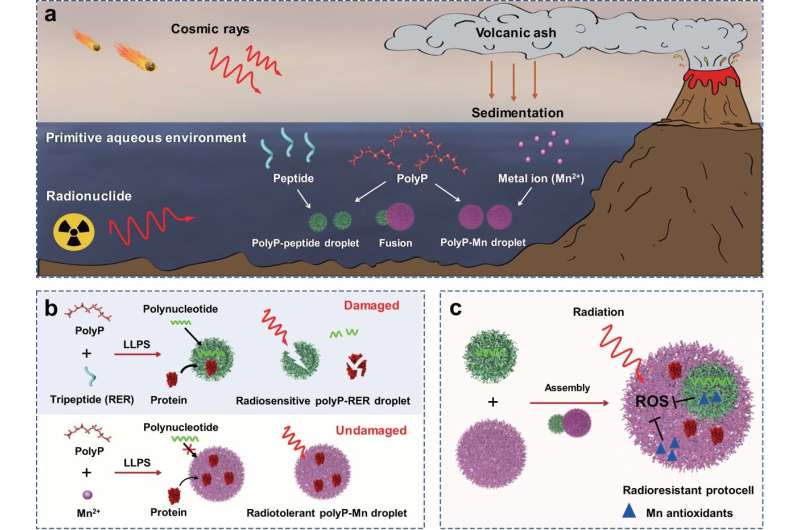December 6, 2023 report
This article has been reviewed according to Science X's editorial process and policies. Editors have highlighted the following attributes while ensuring the content's credibility:
fact-checked
peer-reviewed publication
trusted source
proofread
A possible way for early life on Earth to survive cosmic radiation

A team of biophysicists affiliated with several institutions in China has uncovered via experimentation the means by which early life might have been able to survive cosmic radiation. In their study, reported in the journal Nature Communications, the group conducted experiments with radiation-resistant manganese antioxidants.
Prior research has shown that the Earth was formed approximately 4.5 billion years ago, and that life arose approximately a half-billion years later. Prior research has also shown that the Earth's magnetic field did not start protecting life from cosmic radiation until approximately 3.5 billion years ago. This leads to questions about how life was able to begin and flourish in those early years.
A type of bacteria known as Deinococcus radiodurans has been shown to be capable of surviving levels of radiation that would kill most other living creatures. Study of this bacteria reveals that it is able to do so because of the amount of Mn(II) (manganese) ions in its body—it serves to protect the tiny creatures from the oxidative stress that would occur in other bacteria that do not have it. This finding has led to theories that suggest harboring of Mn(II) ions is the means by which early life survived on Earth.
To test this theory, the research team created models they describe as protocells—such "coacervates" were used to serve as stand-ins for early life protocells on Earth. The team used two types, one based on polyphosphate manganese, the other based on polyphosphate peptides.
When exposed to high levels of gamma rays, the polyphosphate–manganese coacervates remained intact and viable. The polyphosphate–peptide coacervates, on the other hand, were destroyed.
Prior research has shown that polyphosphate manganese has been present on Earth longer than life has existed, likely produced during volcanic activity—thus, it would have been available for use by protocells as a means of protection.
The researchers suggest that early protocells on Earth were able to survive due to protection by material similar to polyphosphate manganese. Such protocells, they note, would have been able to survive long enough to develop into cyanobacteria and eventually eukaryotic cells, which would have been protected by the Earth's magnetic field and ozone layer.
More information: Shang Dai et al, An inorganic mineral-based protocell with prebiotic radiation fitness, Nature Communications (2023). DOI: 10.1038/s41467-023-43272-5
Journal information: Nature Communications
© 2023 Science X Network





















